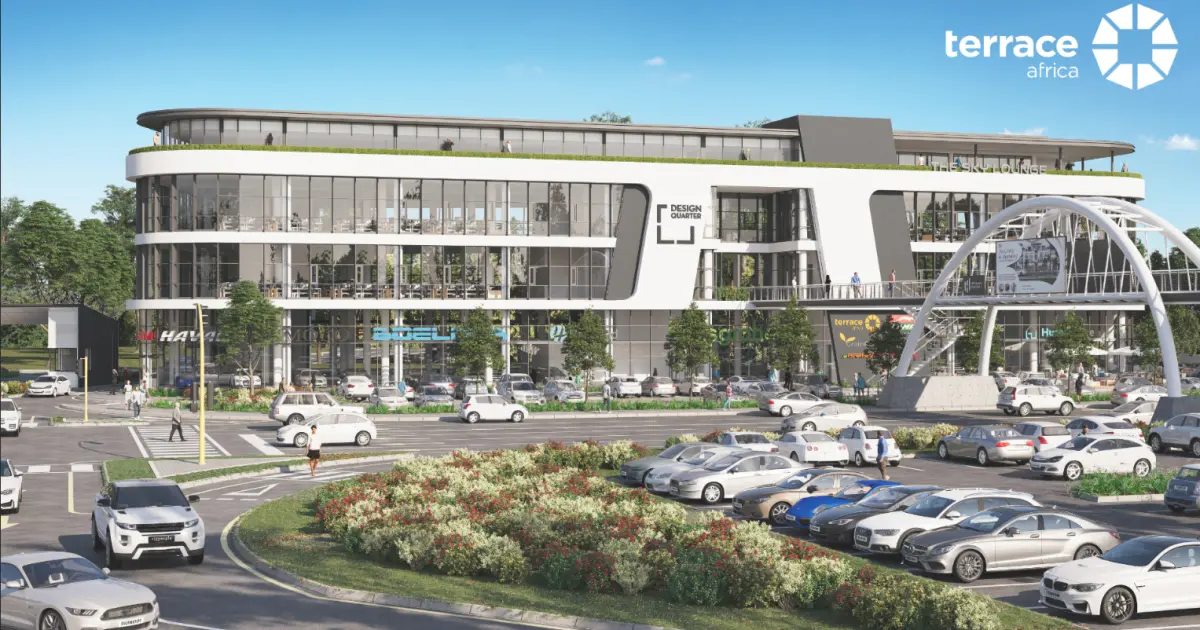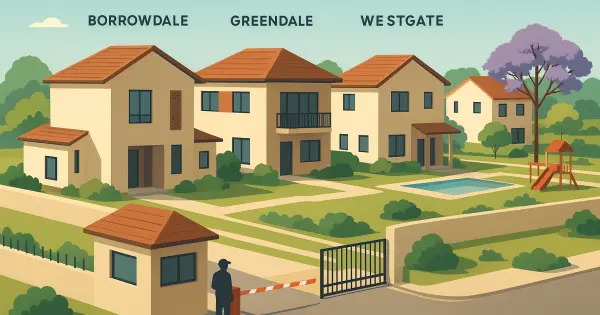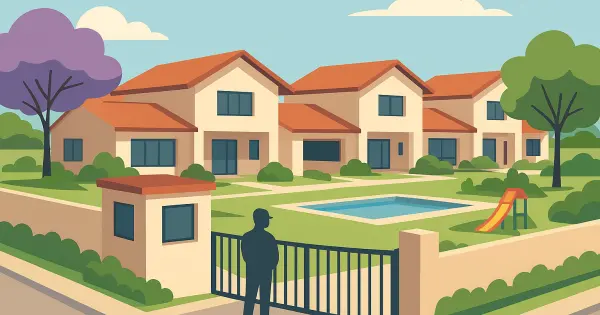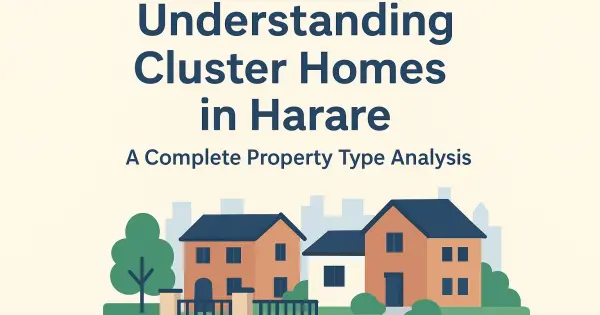Propertybook Exclusive: Brett Abrahamse reveals the ambitious vision behind Highlands Precinct—and why this Harare suburb could rival South Africa's most iconic commercial hub.
Highlands, Harare is a special suburb. Stand on Arcturus Road today, and you'll see a vision taking shape in real time.
Cafés Nush and De Paris are almost always abuzz with afternoon crowds. Wide parking lots connect seamlessly to open-air retail spaces. Trees provide natural shade over pedestrian walkways into TM Pick n’ Pay, Rocco Mamas and Pariah State.
And the perennial construction crews signal what's next—more buildings, more businesses, more reasons to believe that Highlands is becoming something bigger.
Brett Abrahamse, Managing Director of Terrace Africa, isn't shy about the comparison. "I think this Highlands precinct in five years time is going to have 10-15 buildings in it," he says.
"It's quickly going to become a Rosebank or a Sandton."
That's a bold claim. But when you consider what Terrace Africa has already delivered—Village Walk, Greenfields Showgrounds, Chinamano Corner—and what they're building on 20 hectares of land in Highlands, the comparison starts to make sense.
Why Highlands Picked Them (Not the Other Way Around)
Ask Abrahamse why they chose Highlands, and he flips the question. "I think Highlands kind of picked us."
The location tells the story of how Highland Park came to be.
At this vital hub, you're 10-15 minutes closer to the airport than in Borrowdale; five to ten minutes from the city center. Yet you're surrounded by mature trees in a leafy, suburban setting.
"It's the best that Zimbabwe has to offer," Abrahamse explains. "You get open space with mature trees, a distinct African space, but you are close to where you need to be."
Highlands has always been aspirational—home to the American and South African ambassadors' residences, with streets like Orange Grove carrying prestige. But it's also practical.
Arcturus Road connects high-density suburbs like Damofalls and Mabvuku to more established areas like Greendale and everything along Enterprise Road. That makes it a natural hub.
What started as plans for a simple neighbourhood center evolved as Terrace Africa acquired neighbouring properties.
Highland Park opened in 2022 and performed so well they added a Phase Two. Then people realized what was happening. "Arcturus Road is quite a hub," Abrahamse says.
The contrast with Borrowdale is deliberate. Despite Terrace Africa's investment in Village Walk, Abrahamse sees Borrowdale as "one of the most fragmented suburbs." And he’s right.
You can't walk between developments. Sidewalks aren't built for pedestrians or bicycles. Everyone has to drive everywhere.
"We just thought that there needed to be a zone and node within Zimbabwe where everything worked and it was easily connected," he says. "That's what we want to create."
Building Different: The Open-Air Philosophy
Highland Park looks nothing like Sam Levy's Village or most traditional Zimbabwean shopping centers. It's open-air, with parking in the middle and shops around the perimeter—more American strip mall than an enclosed shopping complex.
That was risky. Zimbabweans like what they know. Introducing something different usually doesn't go well.
But Terrace Africa had done this before—Highland Park is their 14th or 15th shopping center. They understood what works.
"We don't believe in having closed malls in one of the best climates in the world," Abrahamse says. "Why would you do that?"
His logic is simple: Zimbabwe has incredible weather. Why shut out natural light and pump air conditioning when you could be under trees in open air? "We have 20 or 30 ‘bad weather’ days a year, but I mean everyone just sits inside then," he points out.
There's another reason: convenience. Zimbabweans want to park near where they're going. They don't want to walk through a mall to reach their dry cleaner or pizza place. Open-air layouts let people park, grab what they need, and go.
The design also creates variety—multiple coffee shops and restaurants in close proximity. That's normal in South Africa or America, but new for Zimbabwe. "Zimbabweans didn’t have a lot to celebrate for many years, in terms of new infrastructure and development," Abrahamse notes. "They are always looking at what is being delivered around them in South Africa, Botswana or Kenya."
When Zimbabweans travel and see how things work elsewhere, they come back wanting that same experience. Terrace Africa is simply delivering it.
The Business Model: Anchor Tenants and Phased Growth
Across Enterprise road, connected to Highland Park via a footbridge, Terrace Africa is expanding what they’ve dubbed the Highlands Precinct.
This commercial space will feature a GWM Haval showroom, corporate head offices for companies such as Puma, Trafigura and Titan Law, as well as an airline, an Italian furniture brand and even a rooftop conference venue and bar.
The formula is straightforward: secure one anchor tenant, then build around them. "Don't bolt too big too soon," Abrahamse advises. "Rather phase it and grow as the demand comes."
That patience has paid off. On 20 hectares of land, mostly behind the current development Terrace Africa plans apartments, a hotel development, offices, and more retail. "It's going to be a great mix of assets," Abrahamse says. "A proper city within the city."
Investing in Highland Park: The REIT Opportunity
Before Terrace Africa developed Highland Park, Abrahamse helped list REITs (Real Estate Investment Trusts) in Mauritius, Botswana, South Africa, and Kenya. When Zimbabwe finalized its REIT legislation, he saw an opportunity.
"Zimbabweans love property but it's very difficult to own your own shopping center," he explains. "The capital requirements are very prohibitive for the average person."
A REIT changes that. For $100 or $1,000, anyone can become a shareholder in Highland Park and receive quarterly dividends in US dollars. Terrace Africa's REIT—Zimbabwe's first and largest—has paid 12 consecutive dividends.
"Start off small, see how we perform, and grow your holding over time," Abrahamse encourages. "Reinvest your dividends and join us for the ride."
What's Next: Bulawayo and Residential Development
The expansion continues. Terrace Africa is building an amusement park in Greenfields and plans to develop something in Bulawayo next year. They're also entering residential development—apartment blocks within walking distance of Highland Park.
"I think because of what we are doing and the amenities close by, people would want to be in walking distance of Highland Park," Abrahamse says. Better amenities mean better sales prices and faster conversions.
His closing message is direct: "People don't understand how quickly the real estate landscape is changing within Zimbabwe. For many years we were left behind and I think the catch-up is going to be a lot quicker than people anticipate."
Those who invested early in Rosebank and Sandton earned exceptional returns. Abrahamse believes Highland Park offers the same—or better—opportunity.
Five years from now, Highlands won't look like it does today. With 15-20 buildings, mixed-use development, and proper pedestrian connectivity, it could genuinely rival South Africa's premier business districts.
The question isn't whether Highlands is changing. Everyone can see that. The question is whether you'll position yourself to benefit from what comes next.




